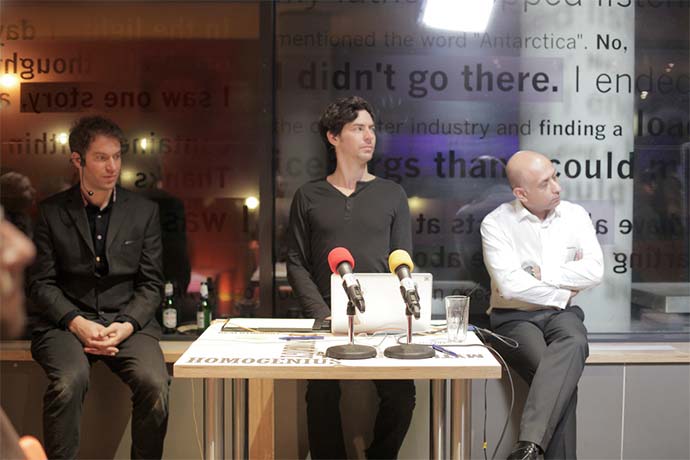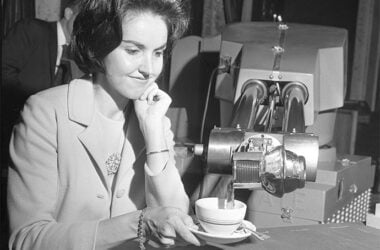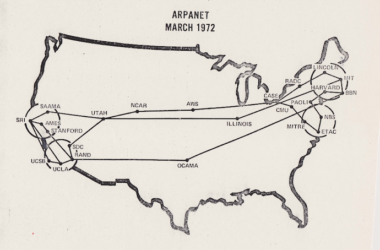As a simple matter, the Turing Test is easy to describe. You sit in a room with a device in front of you. In the next room is a person connected to your device and a machine also connected to your device. You cannot see either the person or the machine in the next room. As you use your device to talk back and forth with the person and machine in the next room, could you tell which is human and which is machine?
I use the words device and machine because, in 1950, when Alan Turing proposed this test, computers as we know them did not exist. Primitive computers had started to appear. And, of course, there was a millenia or more of work on automata, or what we might call robots, from ancient times through the Renaissance to the modern era. People loved to build machines that could do stuff that made them seem human. Or just for fun.
Turing himself in the 1930s had described what became known as the Turing machine. But it was a set of ideas that described what we call a computer and solved a mathematical problem. Turing had more interest in the math problem, and less interest in the physical machine.
How the Turing Test Was Created
The Turing test first appeared as an idea in a paper he wrote, Computing Machinery and Intelligence, published in 1950. Unlike many academic papers, his essay is chatty and easy to read.
He begins by asking the question, “Can computers think?” Then he ignores the question and suggests a game:
The new form of the problem can be described in terms of a game which we call the ‘imitation game.” It is played with three people, a man (A), a woman (B), and an interrogator (C) who may be of either sex. The interrogator stays in a room apart front the other two. The object of the game for the interrogator is to determine which of the other two is the man and which is the woman. He knows them by labels X and Y, and at the end of the game he says either “X is A and Y is B” or “X is B and Y is A.”
Questions are to be hand written or, better yet, typewritten to prevent the interrogator from having clues to guess the identity of the man and woman.
Then Turing asks a brilliant question, “What will happen when a machine takes the part of A in this game? Will the interrogator decide wrongly as often when the game is played like this as he does when the game is played between a man and a woman?”
The way Turing dodges the real and most likely impossible to answer question, “Can computers think?” to suggest other easier questions reminds me of the Kobayashi Maru war game in Star Trek 2: The Wrath of Khan movie. And I’m serious. If you recall, the Kobayashi game was unbeatable. It tested how Captain Kirk and others handle failure in a no-win situation. But Kirk, being a bit pompous, refused to fail. He reprogrammed the game so he had a chance to win. Not a guarantee, however. Above all, Kirk was a gentleman and honorable. I’m teasing on that last point.
The new questions Turing asked — What will happen when a machine takes the part of A [a man] in this game? Will the interrogator decide wrongly as often when the game is played like this as he does when the game is played between a man and a woman?” — he does the same thing. He makes the question easier to solve, more likely to challenge people.
And he liked his rephrase of the “can computers think?” question because it more clearly pulls apart the differences between the physical and intellectual capabilities of human beings. In his paper, it leads to some great discussions about objections to the idea computers cannot think, including whether or not animals can think.
How Did the Turing Test Impact Computer Science?
The impact of Turing’s paper in 1950 was immediate and long lasting. It was rejected, accepted, and provided ideas for useful lines of research.
Some people thought the test was too simplistic. Indeed, the most common form of the Turing test has turned out to be chatterbots, bits of software that respond in ways that mimic human thought but without the insights that make human interactions truly human. There’s at least one chatterbot, for example, designed to romance people into giving their personal information online. It’s the movie Blade Runner without the androids.
On the more serious side, Turing’s paper helped legitimize and raise public awareness of the field of artificial intelligence. It kicked off decades of great work creating computers with the ability to reason. For example, the Lisp programming language tried to solve the problem of managing lists of possible responses for an artificial intelligence computing project. And Lisp became a language that influenced many other programming languages in use today, for example, by introducing the idea of conditionals (if/then/else statements).
In 1990, the American inventor Hugh Loebner started the Loebner Prize for the best computer to pass the Turing test. Awards are gold, silver, and bronze based on how successful the computer is with human reasoning and convincing judges they are human. To date, no computer software has done well enough to earn the top silver and gold prizes.
Who Was Alan Turing?
The simple answer: a brilliant mathematician from the United Kingdom whose ideas had a profound influence on computer science and artificial intelligence research in the 1930s, 1940s, and beyond. While people knew of the Turing machine, much of his work during World War II was top secret. He helped decode German messages with the Enigma machine.
His career also sheds light on the differences between computer science in the US and the UK. The US efforts were better funded, in many cases. But the UK computer science accomplishments were equally brilliant and led to the development of a number of early computers which led to the development of computers we use today. Turing believed computers could challenge humans in intelligence and the ability to reason. His work helped translate the ideas of Descartes, Diderot, and others in history into computer science and technologies we use today.
Alan Turing the person also proved interesting. He made unexpected connections between ideas and areas of thought people considered unrelated. He engaged people in a common often witty way yet made significant contributions in mathematics, cryptography, artificial intelligence, and computer science.
Learn More
Computing Machinery and Intelligence (1950 paper)
http://loebner.net/Prizef/TuringArticle.html
http://www.turing.org.uk/scrapbook/test.html
http://en.wikipedia.org/wiki/Turing_Test
The Loebner Prize
http://www.loebner.net/Prizef/loebner-prize.html
The Turing Machine
http://plato.stanford.edu/entries/turing-machine/
http://www.turing.org.uk/turing/scrapbook/machine.html
The Turing Machine in JavaScript
http://www.turing.org.uk/turing/scrapbook/tmjava.html
Alan Turing
http://plato.stanford.edu/entries/turing/
http://www.turing.org.uk/index.html
https://en.wikipedia.org/wiki/Alan_Turing
Chatterbots
https://en.wikipedia.org/wiki/Chatterbot
Kobayashi Maru
http://en.wikipedia.org/wiki/Kobayashi_Maru
https://www.youtube.com/watch?v=Y6Gp2Ir7n9M










